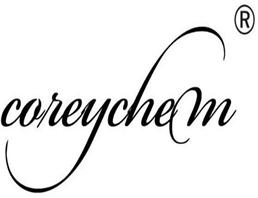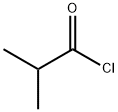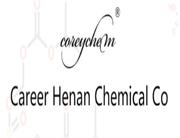| Chemical Properties |
Colorless liquid.Soluble in ether; reacts with water and alcohol. |
| Uses |
Usually used in the synthesis of fully isobutyramide terminated hyperbranched polyethylenimines,the separation and identification of shikonin and its ester derivatives in the root epidermis of Echium italicum. |
| General Description |
A colorless liquid. Flash point near 50°F. Irritates skin, eyes and mucous membranes. Toxic by ingestion, inhalation and skin absorption. Used to make other chemicals. |
| Air & Water Reactions |
Highly flammable. Produces corrosive toxic fumes containing HCl on contact with moist air. Decomposes in water. |
| Reactivity Profile |
Isobutyryl chloride is water reactive. Incompatible with strong oxidizing agents, alcohols, bases (including amines). May react vigorously or explosively if mixed with diisopropyl ether or other ethers in the presence of trace amounts of metal salts [J. Haz. Mat., 1981, 4, 291]. |
| Hazard |
Low toxicity by inhalation. A severe eye irritant. |
| Health Hazard |
May cause toxic effects if inhaled or ingested/swallowed. Contact with substance may cause severe burns to skin and eyes. Fire will produce irritating, corrosive and/or toxic gases. Vapors may cause dizziness or suffocation. Runoff from fire control or dilution water may cause pollution. |
| Fire Hazard |
Flammable/combustible material. May be ignited by heat, sparks or flames. Vapors may form explosive mixtures with air. Vapors may travel to source of ignition and flash back. Most vapors are heavier than air. They will spread along ground and collect in low or confined areas (sewers, basements, tanks). Vapor explosion hazard indoors, outdoors or in sewers. Runoff to sewer may create fire or explosion hazard. Containers may explode when heated. Many liquids are lighter than water. |

 China
China






